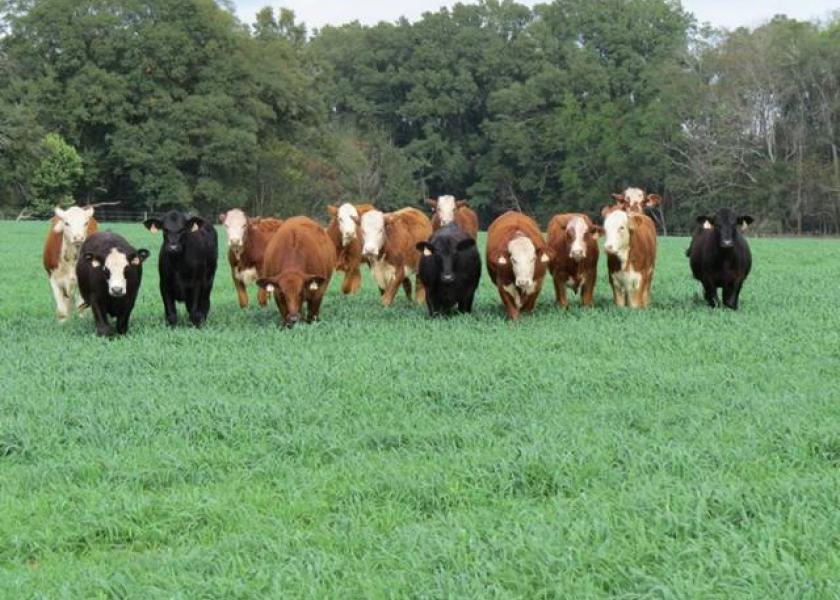Drenching Rains Green Pastures, Bode Well for Herd Expansion

Drenching rains that recently soaked the Great Plains have brought welcomed moisture to areas still recovering from droughts, greening pastures as ranchers begin the annual rite of moving cattle to the nation's summer grazing lands.
Ranchers in Kansas and elsewhere in cattle country are still trying to rebuild herds that were decimated in the 2012 and 2013 droughts, when they sold off much of their livestock because of shriveled pastures and skyrocketing hay prices. But in the past month, ranchers have benefited from inches of rain: Parts of Oklahoma and Texas averaged between 400 and 500 percent of its normal rainfall, and central Kansas saw 125 percent of what's normal, according to MDA Weather Services agricultural meteorologist Don Keeney.
"Nationally, range and pasture conditions are notably improved from last year and other recent periods of drought throughout the U.S.," Kansas State University Extension beef specialist Glynn Tonsor said, adding that it means beef cow herds will expand as planned.
That's good news for consumers, who are seeing record retail beef prices— averaging $6.08 a pound for the all-fresh beef, according to the U.S. Department of Agriculture, 14 percent higher than it was a year ago. Current prices are a result of a double whammy: tighter beef supplies because of cutbacks in herds during the drought and fewer calves going to the slaughterhouse now as ranchers restock herds.
The expansion is reflected in the last official count in January that showed the nation's cattle herd was up by 600,000 head compared to a year ago — which means more calves are being born this year.
"We are expanding the herd very quickly right now," said Kevin Good, a market analyst with industry-tracking group CattleFax, "And so we will have more beef supplies on the market by 2016."
His assessment is based on two important indicators. First, the number of heifers being slaughtered is down between 7 and 8 percent, reflecting that ranchers are keeping their young female calves rather than marketing them. Secondly, slaughter numbers are down 17 percent, an indication fewer animals are going to market than during the drought years.
Those dynamics all come back to the drought's lingering effects that ranchers are now watching dissipate as lush pasture grasses replace the stunted stubble of dry years past. Pastures in the Great Plains of Kansas and Nebraska are in better shape than a year ago, according to the latest data by National Agricultural Statistics Service, as are the southern Plains of Oklahoma and Texas.
Kansas cattleman Ken Grecian sold off during the recent droughts about a third of his cattle herd that had once numbered 350. But last year's summer rains encouraged him to begin rebuilding, and he added about 55 heifers this year that'd been kept from his calf crop.
Though it was a fairly dry winter, Grecian's western Kansas ranch received about 4 inches of rain in the last three weeks. The late rains delayed what he calls his "normal turnout" of cattle to pasture by about 10 days, but he is feeling a lot better about how the land is recovering.
Most of his grass recovered nicely last summer, and he put fewer cattle out so not to overgraze it. This year, he figures his pastures will have recovered enough that he could increase the numbers to somewhat near normal.
"As far as the drought being broken, I don't think it is broken yet," Grecian said. "It wouldn't take too many hot days to make things look tough again."







